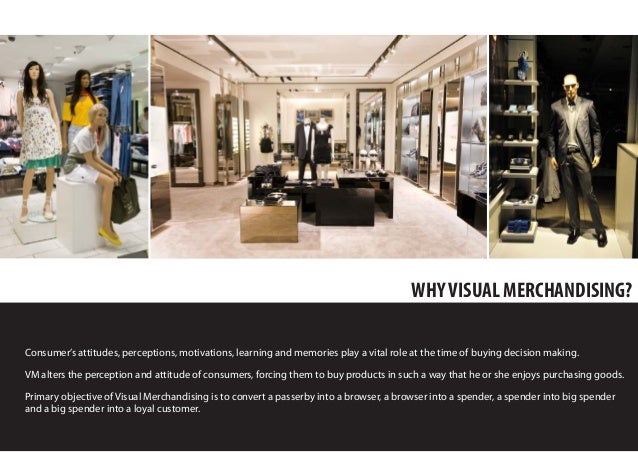Visual Merchandising: The Silent Salesperson Of Retail
Visual Merchandising: The Silent Salesperson of Retail
Related Articles: Visual Merchandising: The Silent Salesperson of Retail
Introduction
With great pleasure, we will explore the intriguing topic related to Visual Merchandising: The Silent Salesperson of Retail. Let’s weave interesting information and offer fresh perspectives to the readers.
Table of Content
Visual Merchandising: The Silent Salesperson of Retail

Visual merchandising is the art and science of presenting products in a retail environment in a way that entices customers, inspires purchases, and ultimately, drives sales. It transcends mere product display, encompassing a holistic approach that leverages visual storytelling, emotional engagement, and strategic design to create a memorable and impactful shopping experience.
The Power of Visual Appeal:
In a world saturated with consumer choices, visual merchandising acts as a powerful differentiator for retail stores. It is the first point of contact between a brand and a potential customer, silently communicating the brand’s identity, values, and product offerings. A well-executed visual merchandising strategy can:
- Attract attention: A visually appealing storefront, window displays, and interior design can draw customers in, pique their curiosity, and encourage them to step inside.
- Showcase products effectively: By strategically displaying products, highlighting key features, and utilizing appropriate lighting and signage, retailers can emphasize product benefits and inspire customer desire.
- Create a desired atmosphere: The overall ambiance of a retail space, from the color palette and music to the layout and furniture, plays a crucial role in shaping customer perception and influencing purchasing decisions.
- Guide customer flow: Strategic product placement, aisle layouts, and signage can direct customers through the store, encouraging them to explore different sections and maximizing their exposure to various products.
- Promote brand storytelling: Visual merchandising can go beyond mere product presentation, incorporating brand narratives, visual themes, and thematic displays to connect with customers on an emotional level.
Key Components of Visual Merchandising:
Visual merchandising encompasses a wide range of elements, each playing a significant role in shaping the customer experience:
- Storefront Design: The storefront is the first impression a store makes on potential customers. A well-designed storefront should be eye-catching, clearly communicate the brand identity, and invite customers to enter.
- Window Displays: Window displays serve as a powerful tool for attracting attention, showcasing new arrivals, and promoting seasonal themes. They should be visually captivating, relevant to the target audience, and effectively communicate the store’s brand message.
- Interior Design: The interior design of a retail space plays a critical role in creating the desired atmosphere. Factors like color palettes, lighting, furniture, and fixtures all contribute to the overall ambiance and influence customer behavior.
- Product Display: The way products are displayed is crucial for showcasing their features, highlighting their benefits, and encouraging customer engagement. Techniques like color blocking, grouping similar items, and using mannequins or props can enhance product presentation.
- Signage and Graphics: Signage and graphics provide essential information to customers, guiding them through the store, highlighting promotions, and conveying brand messages. Effective signage should be clear, concise, and visually appealing.
- Lighting: Lighting plays a critical role in visual merchandising, enhancing product visibility, creating desired moods, and influencing customer perceptions. Proper lighting can highlight product details, create a sense of space, and enhance the overall shopping experience.
- Visual Merchandising Tools: A range of tools and technologies can be utilized to enhance visual merchandising, including digital displays, interactive touchscreens, and augmented reality applications. These tools offer opportunities for engaging customers, providing product information, and creating personalized experiences.
Benefits of Effective Visual Merchandising:
Investing in a strong visual merchandising strategy yields numerous benefits for retail stores:
- Increased Sales: By attracting attention, showcasing products effectively, and creating a positive shopping experience, visual merchandising directly contributes to increased sales and revenue.
- Enhanced Brand Image: A cohesive and well-executed visual merchandising strategy reinforces brand identity, builds brand recognition, and enhances customer perception of the brand.
- Improved Customer Engagement: Visually appealing displays and engaging experiences encourage customers to spend more time in the store, explore products, and interact with the brand.
- Increased Foot Traffic: Eye-catching storefronts and window displays attract more customers, increasing foot traffic and maximizing opportunities for sales.
- Enhanced Brand Storytelling: Visual merchandising provides a platform for retailers to communicate their brand narrative, connecting with customers on an emotional level and building deeper brand loyalty.
FAQs on Visual Merchandising for Retail Stores:
1. How can I create a visually appealing storefront?
- Clear branding: Ensure the storefront reflects the brand’s identity through colors, fonts, and overall design.
- Eye-catching elements: Utilize impactful graphics, signage, and window displays to draw attention.
- Maintain cleanliness: A clean and well-maintained storefront is essential for projecting professionalism and attracting customers.
2. What are some effective window display techniques?
- Tell a story: Create a visual narrative that connects with the target audience and promotes the brand’s message.
- Utilize mannequins: Dress mannequins in current styles and showcase key product features.
- Incorporate seasonal themes: Adapt window displays to reflect holidays, seasons, and current trends.
3. How can I improve product display in my store?
- Group similar items: Create cohesive displays by grouping products with similar styles, colors, or functions.
- Use color blocking: Strategically arrange products by color to create visual interest and enhance product visibility.
- Highlight key features: Utilize signage, lighting, and props to emphasize product benefits and unique selling points.
4. What are some tips for creating a positive store atmosphere?
- Choose appropriate music: Select music that complements the brand’s image and creates a desired mood.
- Utilize lighting strategically: Use lighting to highlight products, create a sense of space, and enhance the overall ambiance.
- Maintain a clean and organized environment: A clean and tidy store is essential for creating a positive shopping experience.
5. How can I incorporate visual merchandising into my online store?
- Use high-quality product images: Invest in professional photography that showcases products in a flattering and informative way.
- Create visual storytelling: Utilize product videos, animations, and interactive elements to engage customers and tell a brand story.
- Showcase customer reviews and testimonials: Use social proof to build trust and encourage purchases.
Tips for Effective Visual Merchandising:
- Know your target audience: Understand their preferences, style, and shopping habits to create displays that resonate with them.
- Stay up-to-date with trends: Monitor current fashion trends, design aesthetics, and consumer behavior to ensure displays remain relevant and appealing.
- Experiment with different techniques: Don’t be afraid to try new approaches and experiment with different visual merchandising elements to find what works best for your store.
- Seek inspiration: Visit other retail stores, browse online resources, and attend industry events to gather ideas and stay inspired.
- Track results: Monitor sales data, customer feedback, and store traffic to measure the effectiveness of visual merchandising efforts and make necessary adjustments.
Conclusion:
Visual merchandising is an essential aspect of retail success, transforming a simple shopping experience into a captivating and memorable one. By leveraging the power of visual storytelling, emotional engagement, and strategic design, retailers can create a compelling brand experience that attracts customers, inspires purchases, and drives long-term growth. A well-executed visual merchandising strategy is not just about aesthetics; it’s about creating a compelling narrative that resonates with customers, strengthens brand identity, and ultimately, drives sales. As the retail landscape continues to evolve, embracing the principles of visual merchandising will be crucial for brands seeking to stand out, engage customers, and thrive in a competitive market.







Closure
Thus, we hope this article has provided valuable insights into Visual Merchandising: The Silent Salesperson of Retail. We hope you find this article informative and beneficial. See you in our next article!
You may also like
Recent Posts
- Shaping The Homes Of Tomorrow: Home Decor Trends For 2025
- Navigating The Evolving Landscape Of Home Decor Trends: A Comprehensive Guide
- Weaving History And Home: A Guide To Unique Vintage Farmhouse Decor
- The Enduring Appeal Of Wooden Duck Home Decor: A Timeless Symbol Of Nature And Serenity
- Beyond The Ordinary: A Guide To Unique Home Decor Accessories
- Navigating The Fast Fashion Landscape: Exploring Alternatives To SHEIN
- A Global Network Of Home Improvement: The Reach Of The Home Depot
- Finding The Perfect Pieces: A Guide To Home Decor Shopping

Leave a Reply